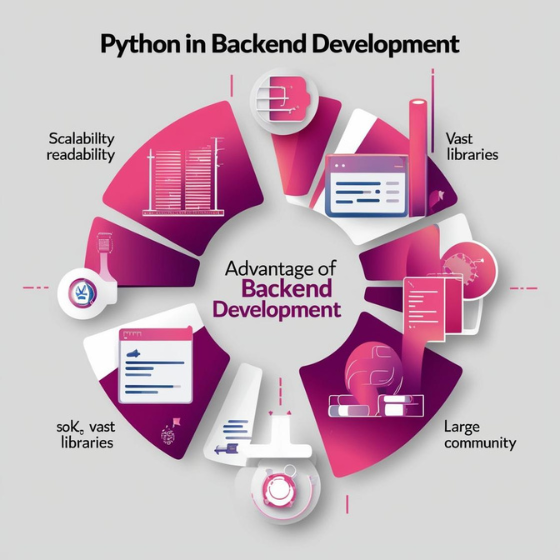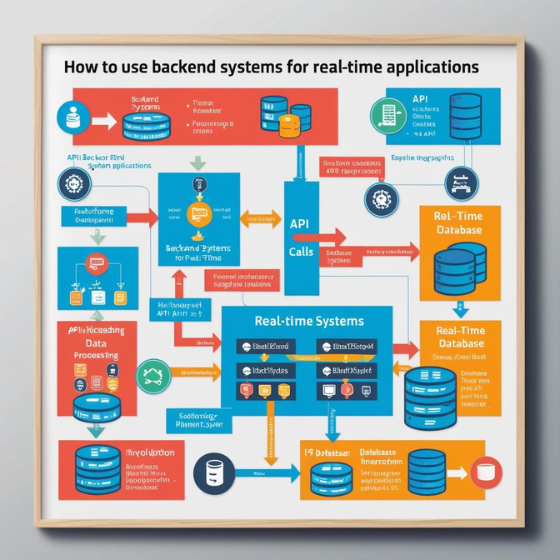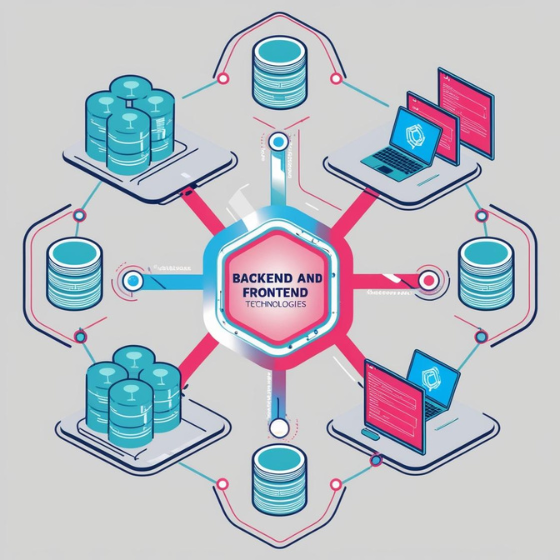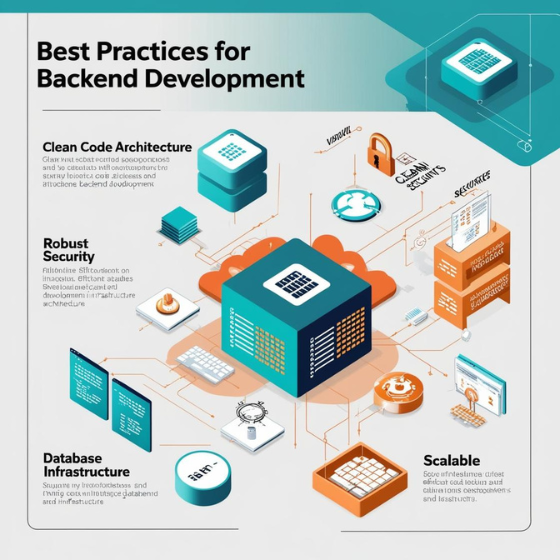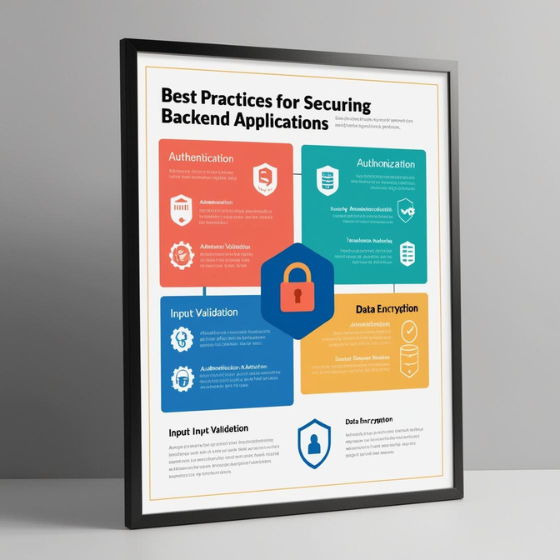Benefits of Python for Backend Development: Why It’s the Go-To Choice
Did you know that Python ranks as one of the top programming languages for backend development, with over 15 million developers worldwide using it? Its simplicity, flexibility, and robust ecosystem make it a favorite for building reliable and scalable backend systems. Whether you’re running a startup or an enterprise, understanding the benefits of Python for backend development can help you make informed decisions about your tech stack and achieve unparalleled efficiency in your projects.
In this blog, we’ll dive deep into why Python is the preferred choice for backend development, how it simplifies complex workflows, and how it can empower businesses to innovate at scale.
What Makes Python Stand Out for Backend Development?
Python’s popularity isn’t a coincidence. It’s a culmination of features designed to solve real-world development challenges. Here are the core reasons Python is unmatched in backend development:
- Ease of Learning and Use: Python’s intuitive syntax reduces development time, making it accessible even to beginners.
- Rich Ecosystem: With powerful libraries and frameworks like Django and Flask, Python supports rapid development of backend systems.
- Cross-Platform Compatibility: Python works seamlessly across platforms, ensuring flexibility and reducing compatibility issues.
- Scalability: Python can handle everything from small-scale projects to enterprise-grade applications, adapting as your needs grow.
For businesses, these benefits of Python for backend development translate into cost savings, faster time-to-market, and better system reliability.
Ready to optimize your backend systems? Explore our Python development services.
Key Benefits of Python for Backend Development
1. Rapid Development with Frameworks
Python’s robust frameworks are a major reason developers love it. Here are some popular ones:
- Django: Known for its “batteries-included” philosophy, Django provides pre-built components for authentication, database management, and more, making it perfect for large-scale applications.
- Flask: A minimalist framework ideal for lightweight applications and developers seeking flexibility.
- FastAPI: Built for speed, FastAPI is excellent for developing APIs and supports asynchronous programming out of the box.
By leveraging these frameworks, developers can focus on building features rather than reinventing the wheel, significantly speeding up the development process.
2. Versatility Across Industries
Python is used in a variety of industries, from FinTech and healthcare to e-commerce and entertainment. It powers:
- E-commerce platforms: Handling user authentication, payment processing, and database management.
- Streaming services: Managing vast amounts of data and enabling smooth user experiences.
- Financial systems: Building secure and efficient transaction systems.
For example, Instagram uses Python for its backend to manage billions of daily interactions, showcasing its ability to handle high-traffic applications.
3. Scalability and Performance
One of the biggest benefits of Python for backend development is its scalability. Python supports:
- Horizontal scaling: Distribute traffic across multiple servers to handle increasing loads.
- Vertical scaling: Optimize code and hardware usage for improved efficiency.
- Asynchronous programming: Use libraries like asyncio to handle simultaneous requests without bottlenecks.
These capabilities ensure that your backend can grow alongside your business needs.
4. Integration Capabilities
Python is a team player when it comes to integration. It works seamlessly with other technologies, including:
- Databases: Tools like SQLAlchemy and Django ORM simplify database management.
- APIs: Python’s compatibility with RESTful and GraphQL APIs ensures smooth data exchange.
- Cloud Services: Easily integrates with AWS, Google Cloud, and Azure for scalable, cloud-based applications.
This versatility makes Python a preferred choice for modern, interconnected backend systems.
Discover how Python can streamline your backend development. Contact our team for a free consultation.
Best Practices for Python Backend Development
1. Use Modular Design
A modular approach ensures that individual components of your application can be updated or scaled independently. For instance:
- Break down your application into modules for user authentication, data processing, and APIs.
- Use Python’s built-in support for packages and modules to maintain clean and organized code.
2. Optimize Performance
Python’s flexibility sometimes leads to performance issues if not optimized. Address these challenges by:
- Using caching tools like Redis to reduce server load.
- Profiling and debugging with tools like Py-Spy to identify bottlenecks.
- Choosing the right framework based on project requirements (e.g., Flask for lightweight apps, Django for complex systems).
3. Implement Robust Security Measures
Security is a critical aspect of backend development. With Python, you can:
- Use Django’s built-in security features like CSRF protection and SQL injection prevention.
- Employ encryption libraries like PyCryptodome for secure data transmission.
- Regularly update dependencies to avoid vulnerabilities.
4. Test Thoroughly
Python offers robust testing frameworks like PyTest and Unittest to ensure code reliability. Incorporate testing at every stage of development to catch errors early and maintain system integrity.
Let our Python experts help you build secure and scalable backend solutions. Explore our services.
Real-World Applications of Python in Backend Development
1. Spotify
Spotify relies on Python for its backend systems, enabling data analysis and personalized recommendations for millions of users daily.
2. Dropbox
Dropbox uses Python to manage its server backend, ensuring seamless file synchronization across devices.
3. YouTube
Python powers YouTube’s backend to handle massive amounts of user-generated content and deliver videos efficiently to millions of users globally.
These examples demonstrate Python’s ability to deliver reliable and scalable backend systems for some of the world’s largest platforms.
How Sodio Can Elevate Your Backend with Python
At Sodio, we specialize in building robust and scalable backend solutions tailored to your unique business needs. Here’s how we can help:
- Custom Development: From idea to execution, we build solutions that align with your goals.
- Expert Team: Our Python developers bring years of experience and innovation to every project.
- Scalable Solutions: We design backends that grow with your business, ensuring long-term reliability.
- Ongoing Support: Beyond development, we offer maintenance and optimization services to keep your systems running smoothly.
Ready to transform your backend systems? Get in touch with Sodio today.
Conclusion: Unlocking the Potential of Python for Your Backend
Python’s simplicity, scalability, and versatility make it the ideal choice for backend development. From rapid development with powerful frameworks to seamless integration and top-notch performance, the benefits of Python for backend development are undeniable.
Whether you’re launching a new application or scaling an existing one, Python provides the tools and flexibility to meet your needs. At Sodio, we’re passionate about helping businesses leverage Python to create backend systems that drive innovation and growth.
Take the next step toward building a reliable and scalable backend. Explore Sodio’s development services or connect with our team for personalized solutions that empower your business.
